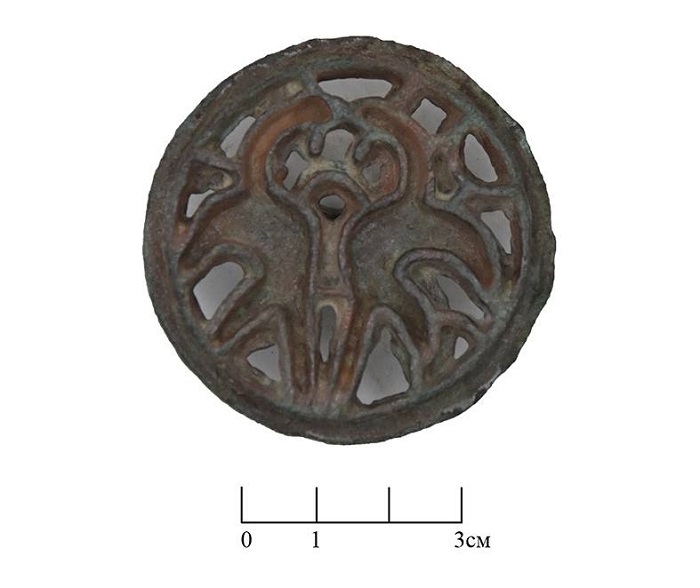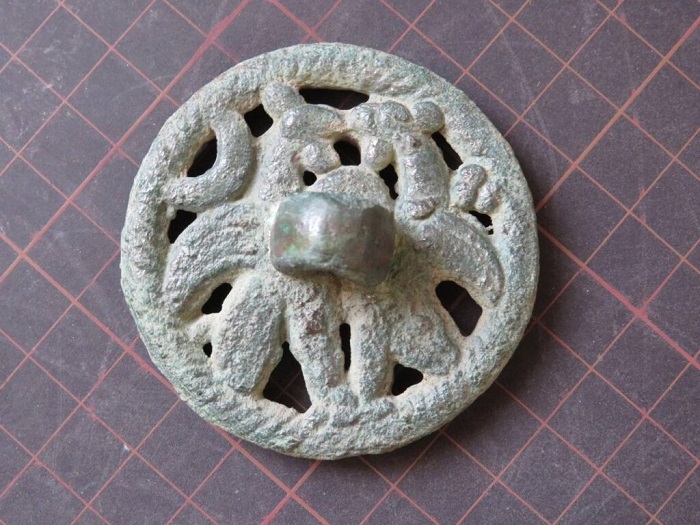From mid-September to the second half of October 2024, the Russian-Turkmen Margian Archaeological Expedition conducted excavation season in Turkmenistan under an agreement between the Institute of Ethnology and Archaeology of the Russian Academy of Sciences and the Ministry of Culture of Turkmenistan.
The expedition was led by Dr. Nadezhda Dubova from the Russian side, and Dr. M.A. Mammadov from the Turkmen side.
The team concentrated on defining the boundaries of a smaller settlement adjacent to the main palace and temple complex, Gonur-depe 20.
Additionally, the expedition employed Geographical Information Systems (GIS) to precisely map the relative positions of all excavated areas and nearby settlements.
While the majority of the discoveries this season involved children’s burials, a particularly intriguing find was the grave of a ram, interred with human-like honors. Furthermore, several other fascinating artifacts were unearthed from the cultural layer.
Mysterious Seals
First of all, 11 seals were found, of which four are the most interesting.
The Gonur-depe site is renowned for its extensive collection of seals, numbering over 350.
The latest find includes a rare cylindrical seal, bringing the total number of such seals discovered at the site to six. This miniature seal is adorned with intricate carvings depicting three fantastic creatures: two horned ungulates and a predator. The base of the seal showcases two finely carved scorpions, positioned head-to-tail.
The seal, crafted from a soft red mineral identified as talc-agalmatarite, shows signs of significant wear, suggesting its frequent use and likely origin in Margiana.
Another intriguing find is a four-pointed star seal with jagged edges and an inscribed four-petaled flower. The reverse side of this seal bears a scratched quadrangle. It may have served as a manufacturing mark or held a ritual or symbolic significance.
Two more bronze seals stand out: one in the form of a large cross (similar ones were found on Gonur earlier), and the second is unique.
The seal is round and well preserved. Two bird griffins stand with their wings spread and their beaks, legs and chests touching each other. On the head of each of them, eyes, crests and beards are well shown, very reminiscent of cockerels. There is a crescent moon behind the back of the left griffin, and three dots behind the back of the second one, most likely showing stars.
If experts in the history of astronomical knowledge confirm this interpretation, this seal would be the earliest known example in Turkmenistan to depict not only the sun and moon but also other celestial bodies. Such a discovery would offer profound insights into the astronomical knowledge and beliefs of ancient Margiana.
Stone Amulet
A fascinating two-sided talcochlorite stone amulet has been uncovered. One side features a winged griffin with its mouth open, its wings extending over the amulet’s edges. The other side depicts a bull, whose tail and tongue are transformed into snakes with open mouths. This intriguing combination of symbols likely held deep spiritual significance for the ancient inhabitants of Margiana.
The iconic vessel
The recently excavated ram burial yielded a remarkable discovery: a cult vessel reminiscent of those found in the sacred buildings of Gonur and other Margiana sites. The vessel’s crown is adorned with terracotta animal figurines, while its inner walls are decorated with snake-like motifs emerging from its surface.
According to the interpretation of renowned archaeologist Victor Sarianidi, such vessels were used for ritual drinking of Soma-Haoma, a sacred beverage that symbolized the primordial Zoroastrian sea, Vorukash. The belief was that only heroic figures could consume this drink.
The vessel found this season is distinguished by the presence of strange small creatures, similar to leeches, stuck on its bottom. Such patches, unlike frogs and snakes, are found in Margiana for the first time.
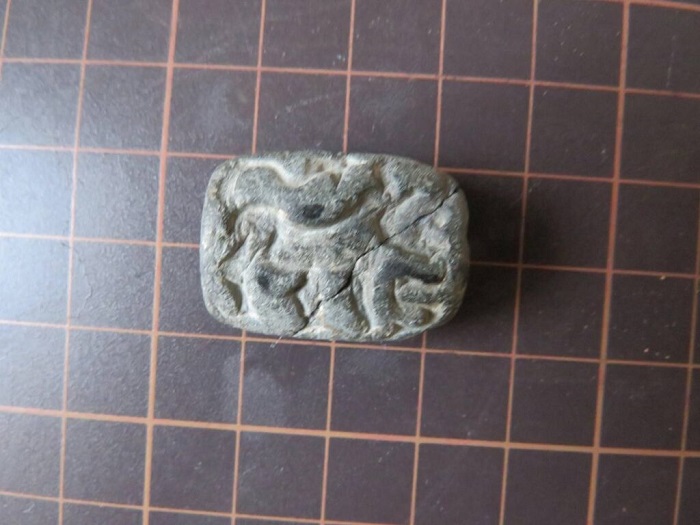 Evidence of Early Horse Domestication at Gonur-depe
Evidence of Early Horse Domestication at Gonur-depe
Recent archaeological excavations at Gonur-depe have unearthed evidence suggesting the domestication of horses in the region during the Bronze Age. A recently discovered skull, larger than that of a donkey, is believed to belong to either a horse or a kulan.
This finding, coupled with the eight previously discovered horse bone fragments, may prove the hypothesis of horse breeding in southern Turkmenistan as early as the Bronze Age. Given that Gonur 20 dates back to the transition between the 3rd and 2nd millennia BC, this discovery may indicate that the region served as an early center for horse domestication in Central Asia.
Museum research
Over the course of numerous archaeological excavations, Margiana has yielded an impressive collection of over 30,000 artifacts. These treasures are currently housed in three museums: the Regional Museum of Mary and the State Museum and Museum of Fine Arts in Ashgabat.
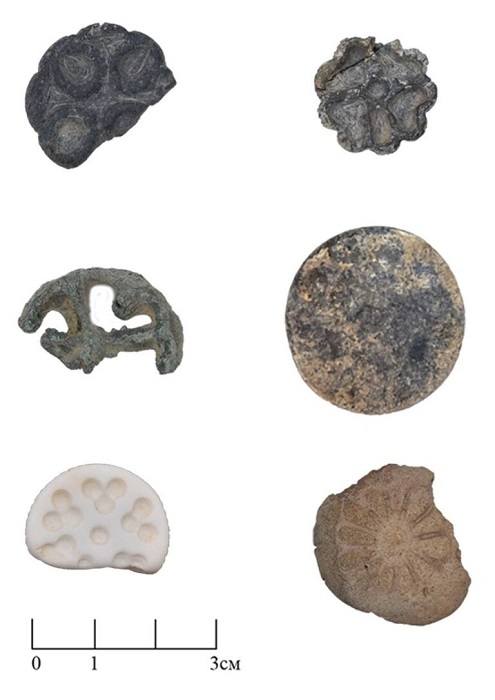 The current season has focused on the restoration, conservation, and study of the unique Gonur mosaics, which combine painting on plaster with mosaic techniques. Thousands of mosaic fragments, unearthed from the “royal burials” in 2004 and 2009, have been meticulously disassembled and analyzed. Researchers have delved into the techniques employed, the diverse materials used, and the underlying compositional principles.
The current season has focused on the restoration, conservation, and study of the unique Gonur mosaics, which combine painting on plaster with mosaic techniques. Thousands of mosaic fragments, unearthed from the “royal burials” in 2004 and 2009, have been meticulously disassembled and analyzed. Researchers have delved into the techniques employed, the diverse materials used, and the underlying compositional principles.
Several compositions, including those featuring winged griffins and a captivating image on a cylindrical wooden vessel, have been reconstructed and prepared for exhibition.
Plans for an exhibition of Margiana artifacts in Russia
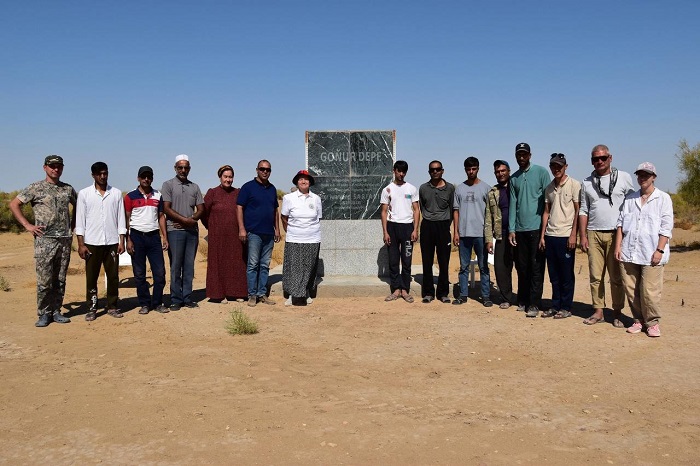 During the autumn season of the Russian-Turkmen Margian Archaeological Expedition, Russian researchers held a series of meetings with the National Directorate for the Study, Protection and Restoration of Historical and Cultural Monuments of Turkmenistan, with the heads of museums of Turkmenistan and the Ministry of Culture. The topic of the meetings was the discussion of the possible holding of an exhibition dedicated to Margiana in Russia in 2027 ///nCa, 2 November 2024
During the autumn season of the Russian-Turkmen Margian Archaeological Expedition, Russian researchers held a series of meetings with the National Directorate for the Study, Protection and Restoration of Historical and Cultural Monuments of Turkmenistan, with the heads of museums of Turkmenistan and the Ministry of Culture. The topic of the meetings was the discussion of the possible holding of an exhibition dedicated to Margiana in Russia in 2027 ///nCa, 2 November 2024
